Building “Arms Up KAWS!”
Step 1 – Build the circuit
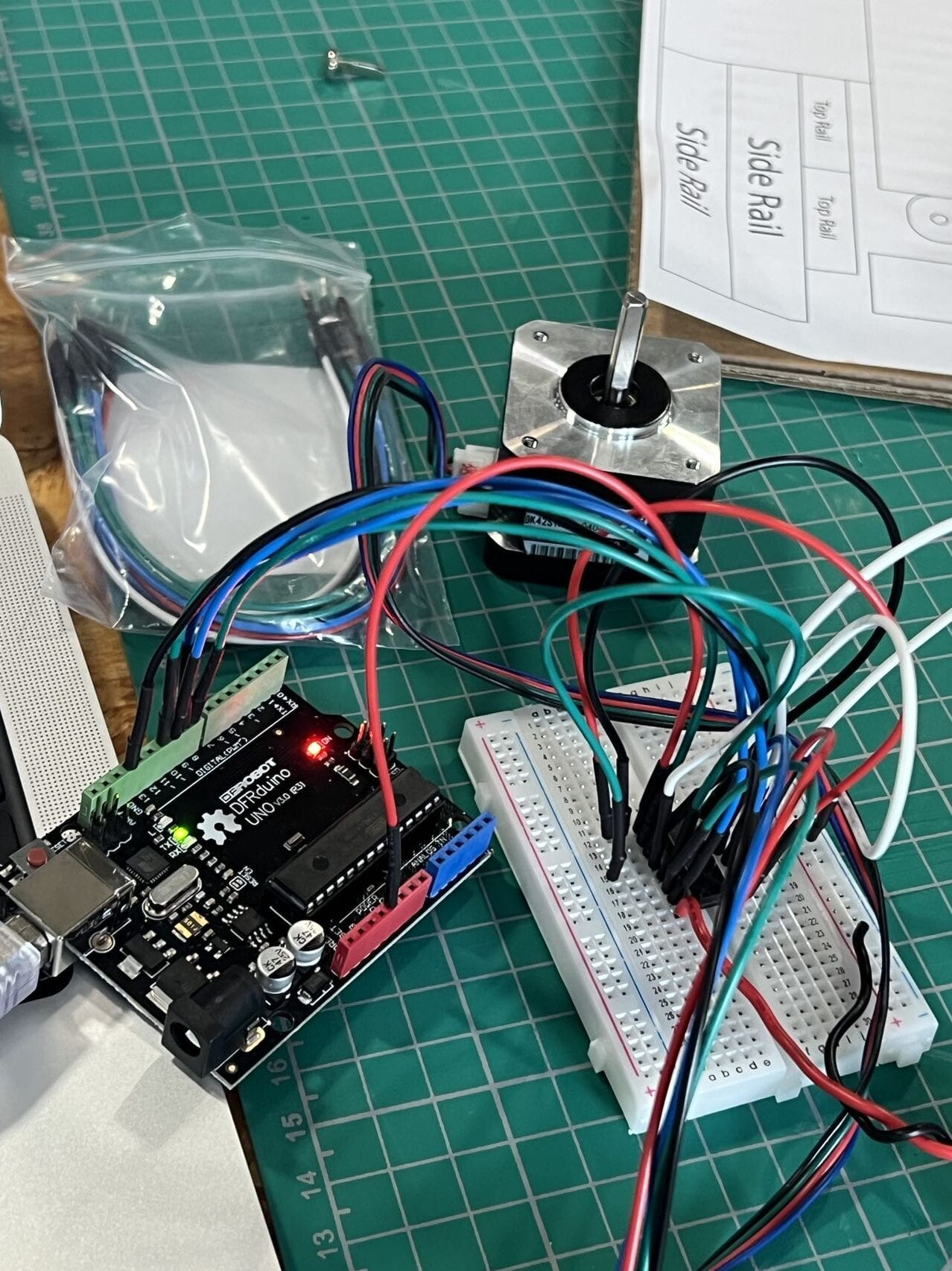
It seems like a really complex circuit with a huge number of wires. But it did work for the first time I plugged it with the power! Which surprised me a lot.
Step 2 – Build a cardboard mechanism
My parter made most of the cutting part, and I did most of the hot glue gun sticking works. He sticked the template to the cardboard, and then cut the board following the line drew on the template. And then I sticked all of the small pieces together according to the sample showed in class. (Sorry for forgetting taking photos of my partner cutting boards🤣)
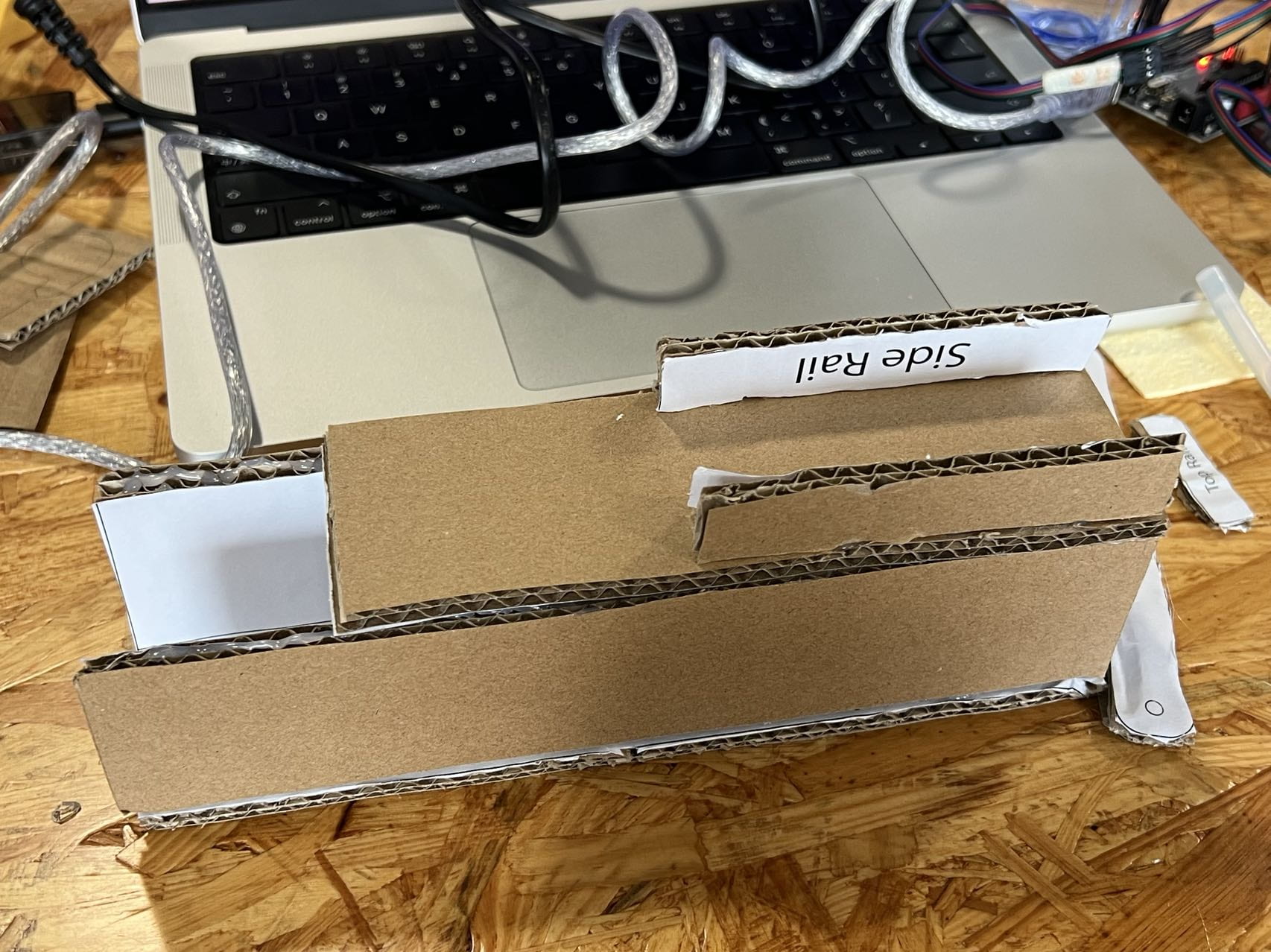
Then, following the steps on website, we combined the cardboard with the step motor and shaft adaptor with those tiny rivets.
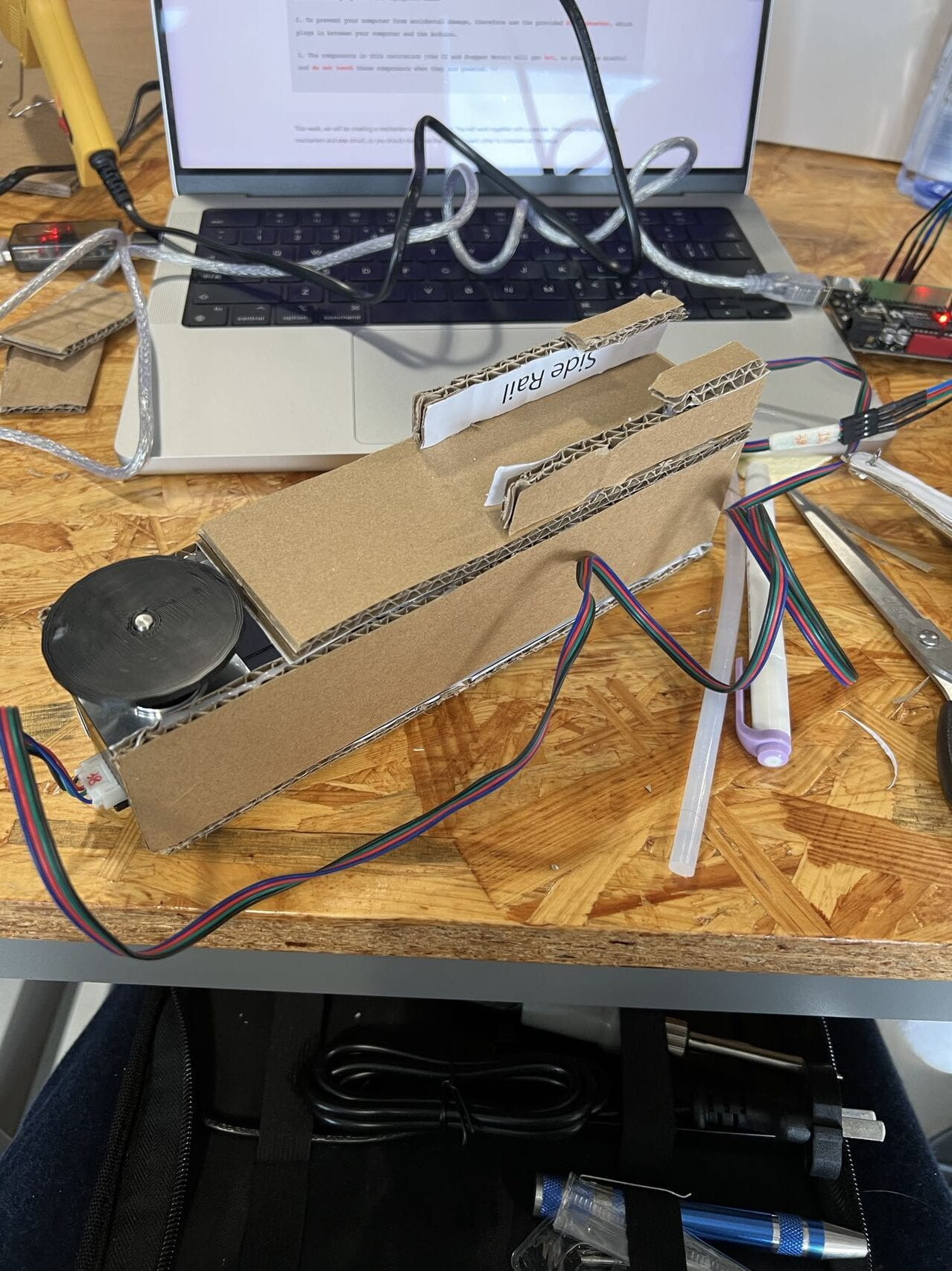
Step 3 – Personalize it
At first, we have no idea what to draw on the cardboard, then my partner Jason saw the KAWS on Rudi’s t-shirt, and we decided to draw it.
To make it more interesting, we decided to make the arm up and down. So we cut off its arms (sounds a little bit bloody😱) and stick them to a small piece of cardboard which is sticking on the linear arm. To make it looks like only the arms are moving, we stick the KAWS’ body on the top rail. However, because I did not measure the length correctly, so the arms were stuck , so could not constantly raise up and down.
Then we modified the code with the instructions on website, so the KAWS could move its arms more quickly, it looked fun!
Additional questions:
1.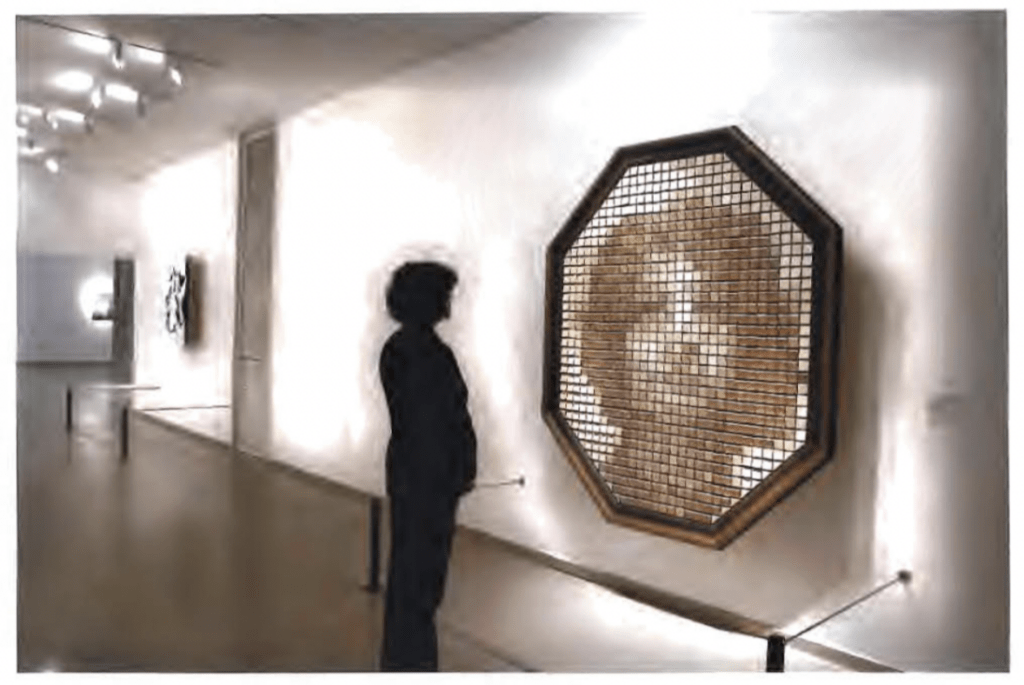
(Daniel Rozin, Mechanical Mirrors: Wooden Mirror, 1999-2008.)
This is the most attractive art installation for me in the book, as I think it is really imaginative and astonishing to portrait a human’s face on a wooden pixel. It is really interactive as the image on the mirror would be totally different from different people. As we all know, mirror is working with reflection, and the surface should be extremely smooth. However, the wooden blocks are rough, and with its brown color, people would feel a little bit bizarre but warm.
In comparison, the wooden mirror is more interactive as it would change all the time according to people’s movement. However, our recitation project could only move in one pattern, and it wouldn’t change by occasion. Besides, the wooden mirror has sensors for its grey-scale values, and it includes more part of computing.
I guess the artist may use the servos for the action of the wooden block. (I have just realized perhaps the wooden block is not moving……) The artist may chose the actuators depend on how he wants to portrait his artifact.
2.
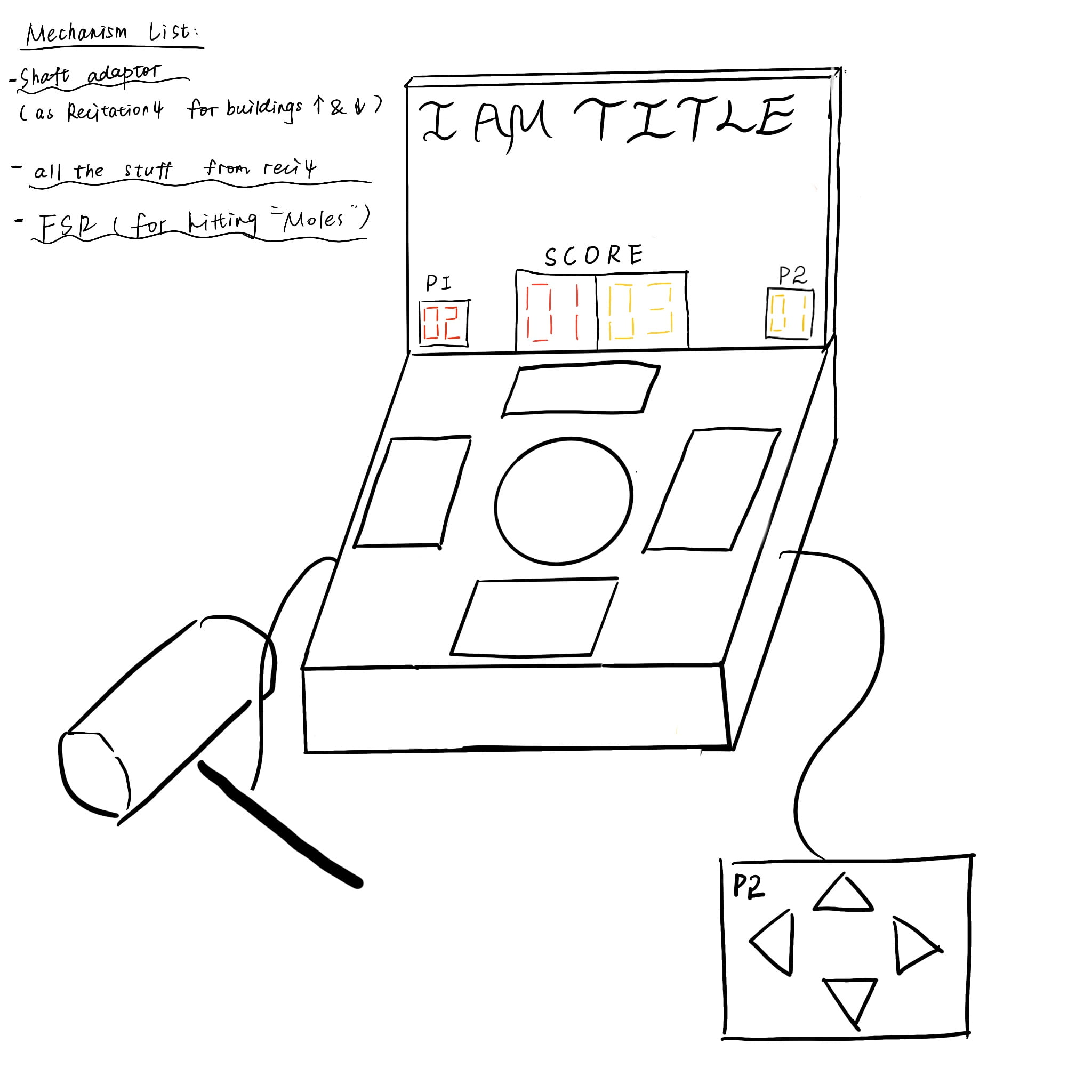
So for the physical interaction, one player would use the buttons to control which mole to pop up, and the other one should use the hammer to hit the mole on its head, where we would bury a force sensor. Thus, the force people put on the mole and the button is the physical way I am expecting the user to embrace.
If we use a screen to show the moles popping up from the hole, people won’t really feel hitting something. The physical feedback is the most important part of a physical game. Additionally, I don’t see many things that I have to portrait with a digital screen.
